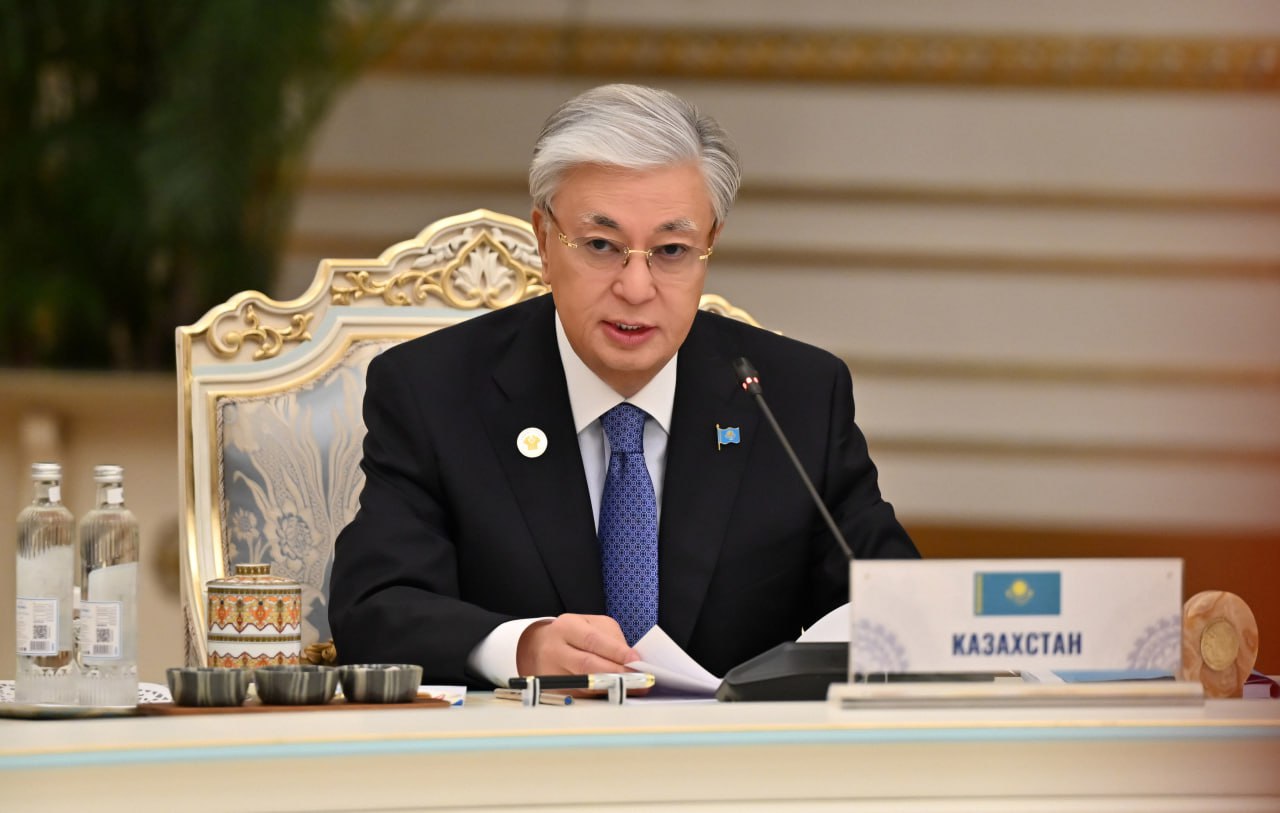ASTANA, Kazakhstan, October 11. At the Central Asia–Russia summit in Dushanbe on October 9, Kazakhstan’s President Kassym-Jomart Tokayev outlined his vision for the region’s future. He emphasized the importance of strengthening political solidarity, economic cooperation, and cultural unity, while highlighting Kazakhstan’s role not merely as a participant, but as a key driver in the development of Central Asia’s transport, logistics, and energy infrastructure.
Situated at the heart of Eurasia, Kazakhstan serves as a critical hub in the region’s transport and logistics network, ensuring sustainable connectivity between East and West, as well as North and South. Tokayev noted that 11 international transport corridors, five rail and six road, pass through the country, handling approximately 85 percent of overland freight between Asia and Europe. Over the past 15 years, more than $35 billion has been invested in modernizing this strategically vital sector.
During his address, Tokayev highlighted several key developments. In the past three years, rail transit of goods from Russia to Central Asia through Kazakhstan grew by 26 percent, exceeding 30 million tons, while reverse transit increased by nearly 50 percent. Transit from Russia to China via Kazakhstan tripled, reaching 5 million tons. To maintain this growth, Kazakhstan plans to construct more than 5,000 kilometers of new railways and renovate an additional 11,000 kilometers of existing lines by 2030.
The President stressed that a flagship project for the country is the eastern branch of the North–South International Transport Corridor, where freight traffic has already seen significant growth, reaching almost 2.5 million tons in 2024. Kazakhstan aims to double the corridor’s capacity by 2027. To unlock the route’s potential and attract necessary funding, Tokayev proposed launching a Joint Program for Investment and Infrastructure Support of the corridor’s eastern branch.
"This initiative can involve international financial institutions, development banks, and investment funds. In concrete terms, Kazakh and Russian authorities could discuss this project ahead of my visit to Russia on November 12," Tokayev said.
He also highlighted projects to develop transport corridors through Afghanistan, opening access to South Asian markets. In this context, he proposed creating a Council for the Development of the Eurasian Route within the North–South Corridor to coordinate efforts and address operational issues promptly. The council could be chaired by transport ministry officials from participating countries, with involvement from experts, specialists, and business representatives.
Additionally, the Trans-Caspian International Transport Route (TITR), or Middle Corridor, running through China, Kazakhstan, the Caspian Sea, Azerbaijan, Georgia, and Türkiye, connecting East Asia with Europe, has already become a vital artery for freight flows between East and West.
Strengthening road connectivity with neighboring countries also remains a priority. Tokayev noted that the section of the Western Europe–Western China corridor from Kyzylorda to the Russian border will be expanded to four lanes by 2030.
Tokayev paid particular attention to water and energy infrastructure and associated ecological challenges, which are transboundary in nature. He affirmed Kazakhstan’s readiness to engage in large-scale investment and joint projects in this sector. This area is crucial for enhancing cooperation among Central Asian countries and Russia, as water and energy are now key factors for sustainable regional development.
A prime example of regional cooperation is the joint implementation of the Kambarata Hydropower Plant-1 project in Kyrgyzstan (capacity: 1,860 MW; annual generation: around 5.6 billion kWh) with participation from Kazakhstan and Uzbekistan. The project plays a pivotal role in ensuring the region’s energy and water security, strengthening interdependence, and creating conditions for stable resource allocation.
In parallel, Kazakhstan plans to construct a nuclear power plant with Rosatom, opening new opportunities for energy diversification and resilience.
Furthermore, the Green Corridor joint initiative of Uzbekistan, Kazakhstan, and Azerbaijan aims to establish a cross-border energy route for exporting green energy from Central Asia to Europe.
To address ecological challenges systematically, including the state of transboundary rivers and the Caspian Sea, Tokayev proposed establishing a Council of Ministers from Central Asian countries and Russia on environmental issues. A joint space-based monitoring program using satellite constellations was also suggested to objectively assess water resources and agricultural lands.
Beyond infrastructure and energy, Kazakhstan advocates deepening industrial cooperation, particularly with Russia. Moscow and Astana are jointly implementing 114 projects valued at over $21 billion. In the agro-industrial sector, a proposal has been made to create joint clusters for deep grain processing to increase the share of high-value-added products, helping regional countries avoid mutual competition and enhance export potential.
In the security sphere, emphasis was placed on continued coordinated work among the CIS Security Council secretaries, combating terrorism and extremism, and addressing cybercrime using artificial intelligence. Regarding Afghanistan, Kazakhstan supports its inclusion in regional economic processes.
Overall, Tokayev's proposals represent a comprehensive and pragmatic strategy aimed at transforming Central Asia into a prosperous region by strengthening transport links, synergies in key energy projects, and systemic solutions to environmental problems.







